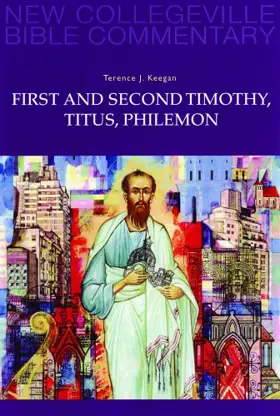

First and Second Timothy, Titus, Philemon
in New Collegeville Bible Commentary
First and Second Timothy and Titus are designated Pastoral Letters because they deal with leadership and organizational issues of the early Christian community. Probably written after the death of Paul, they nevertheless express what Paul himself would have and could have written to community leaders. Second Timothy gives the greatest amount of biographical material we have about Paul. The Letter to Philemon, a miniature but authentic Pauline jewel, is a masterpiece of persuasion regarding a slave’s freedom.
Terence J. Keegan’s perceptive commentaries on these precious remnants of first century Christianity provide information and insight regarding the gradual growth of the church. There are pertinent lessons here for today’s shepherds and their flocks.
Terence J. Keegan, OP, serves as the executive vice president and treasurer at Providence College, Providence, Rhode Island.
Collections
This book appears in the following featured collections.
- Commentaries by Roman Catholic Scholars by John Dyer
